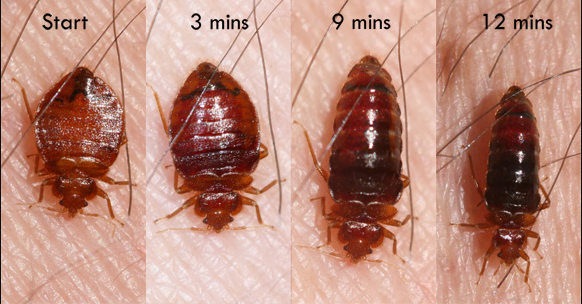Bed bugs are tiny, elusive insects that can cause significant discomfort and anxiety. Known for their ability to hide in the smallest of crevices and their nocturnal habits, they often go undetected until a full-blown infestation occurs. Understanding what bed bugs look like is crucial for early detection and effective management.
What Do Bed Bugs Look Like? Bed bugs are small, reddish-brown insects with oval-shaped bodies. They are about the size of an apple seed and become swollen and darker after feeding on blood. Their flattened bodies allow them to hide in narrow spaces.

Detailed Description of Bed Bugs
1. Physical Characteristics
Size and Shape:
- Bed bugs are approximately 4-5 mm in length, comparable to the size of an apple seed.
- They have an oval and flattened body shape, which enables them to squeeze into tight spaces.
Color:
- Adult bed bugs are reddish-brown.
- After feeding, their bodies swell and become a darker red.
Body Structure:
- Bed bugs have six legs and two antennae.
- Their bodies are segmented, with tiny, fine hairs covering their exoskeleton.
2. Life Cycle Stages
Eggs:
- Bed bug eggs are tiny, about 1 mm, and pearly white.
- They are often laid in clusters and hidden in crevices.
Nymphs:
- Nymphs are immature bed bugs, smaller and lighter in color than adults.
- They go through five molts before reaching adulthood, becoming darker after each molt.
Adults:
- Fully grown adults are about 4-5 mm long.
- They can live for several months, often hiding during the day and coming out at night to feed.
Identifying Bed Bugs in Your Home
3. Common Hiding Spots
Mattresses and Box Springs:
- Bed bugs commonly hide in seams, piping, and tags of mattresses and box springs.
Furniture:
- They can be found in cracks and crevices of bed frames, headboards, and other furniture.
Carpets and Baseboards:
- Bed bugs may also reside under carpets and along baseboards.
Electronics and Appliances:
- These pests can even hide in the crevices of electronics and appliances.
4. Signs of an Infestation
Bite Marks:
- Bed bug bites are often the first sign, appearing as red, itchy welts on exposed skin.
Blood Stains:
- Small blood stains may appear on sheets and pillowcases due to crushed bugs.
Fecal Spots:
- Tiny, dark spots of bed bug excrement can be found on bedding and furniture.
Shed Skins:
- As they grow, bed bugs shed their skins, which can accumulate in their hiding spots.

Preventing and Treating Bed Bug Infestations
5. Prevention Tips
Regular Inspections:
- Inspect mattresses, furniture, and luggage regularly, especially after travel.
Encasements:
- Use mattress and box spring encasements to prevent bed bugs from hiding.
Reduce Clutter:
- Reducing clutter in your home eliminates potential hiding spots.
6. Treatment Options
Professional Pest Control:
- Hiring a professional exterminator is often the most effective way to eliminate bed bugs.
DIY Methods:
- The use of heat treatments, diatomaceous earth, and insecticides can help, but may not be as effective as professional treatment.
Conclusion
Understanding what bed bugs look like and recognizing the signs of an infestation can help you take prompt action. Regular inspections and preventative measures are key to keeping your home bed bug-free. If you suspect an infestation, seeking professional help is often the best course of action to ensure complete eradication.
FAQs
Can you see bed bugs with the naked eye?
Yes, adult bed bugs are visible to the naked eye, though they are small and can be difficult to spot due to their nocturnal and hiding behaviors.
Do bed bugs fly or jump?
No, bed bugs cannot fly or jump. They move by crawling and can spread through hitchhiking on clothing, luggage, and other items.
What should I do if I find bed bugs in my home?
If you find bed bugs, it’s essential to act quickly. Contact a professional pest control service and start implementing preventative measures to avoid further spread.